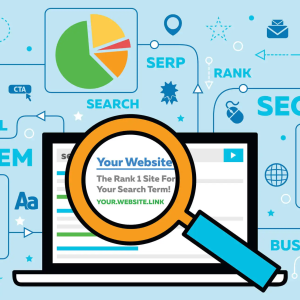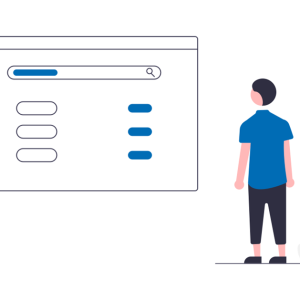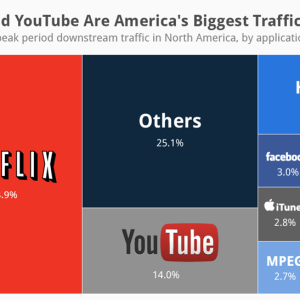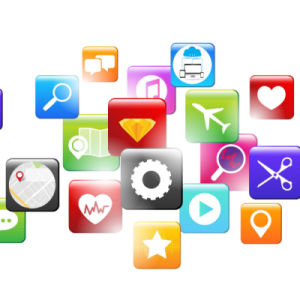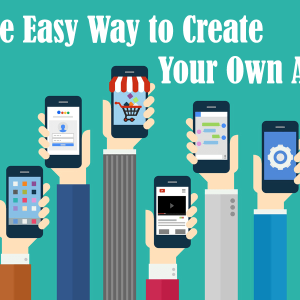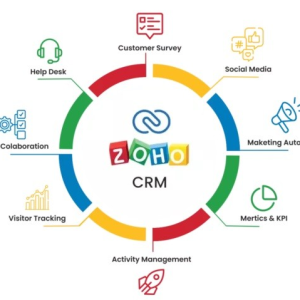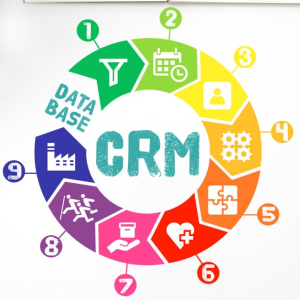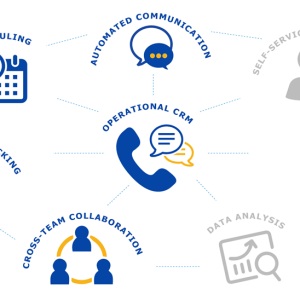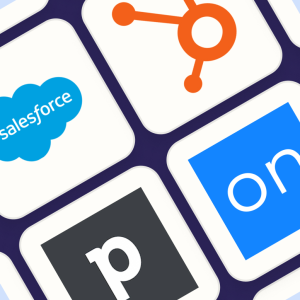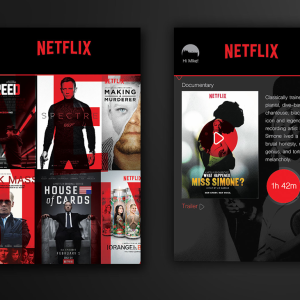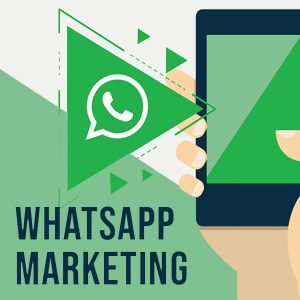Introduction
81% of marketers view content as a core business strategy
(CMI)
Content marketing is a process of creating and distributing valuable, relevant, and consistent content to attract and retain a clearly-defined audience – and ultimately, to drive profitable customer action. In this guide, you will learn the basics of content marketing, including how to create a content marketing strategy, how to select the right channels for distribution, and how to measure your results.
What is Content Marketing?

Content marketing is a strategic marketing approach focused on creating and distributing valuable, relevant, and consistent content to attract and retain a clearly-defined audience — and ultimately, to drive profitable customer action.
At its core, content marketing is about creating content that is interesting and useful for your audience. When done well, content marketing can help you establish your brand as an industry leader, generate leads and sales, drive traffic to your website, and increase customer engagement and loyalty.
The key to success with content marketing is creating a well-balanced strategy that includes a variety of different types of content. Whether you’re producing blog posts, videos, infographics, case studies, or other forms of content, it’s important to include a variety of formats and topics in your strategy. This will ensure that you’re engaging your audience on multiple levels, while also making sure that each piece of content is relevant and valuable to them.
Why Should You Care About Content Marketing?
If you’re not already investing in content marketing, you’re missing out on one of the most effective ways to connect with potential and current customers. Content marketing is all about creating and distributing valuable, relevant, and consistent content to attract and retain a clearly-defined audience – and ultimately, to drive profitable customer action.

Here are just a few of the many other benefits of content marketing:
#1 Content marketing can help you build trust and credibility with your audience
By providing high-quality, informative content, you’ll be able to position yourself as an expert in your industry – which will make people more likely to do business with you.
#2 Content marketing can drive traffic and leads to your website
By sharing your content on relevant and high-traffic channels like social media, email newsletters, and blogs, you’ll be able to increase your reach and attract more potential customers to your business.
#3 Content marketing can help you build stronger relationships with existing customers
By creating valuable content that resonates with your audience, you’ll be able to establish a deeper connection with them – which can be especially helpful if you sell more expensive products or services.
So, if you’re looking for an effective way to connect with potential and current customers, content marketing may be the perfect solution for your business. Start by creating a content marketing strategy that clearly defines your goals, target audience, and content distribution channels. Then, select the right channels based on your goals and audience, and focus on creating valuable and consistent content that resonates with your target market. And finally, make sure to measure your results so you can continually improve your strategy over time. With the right approach, content marketing can be a very effective way to connect with potential and current customers.
The basics of creating a content marketing strategy
#1 Know what your goals are:
If they’re not clear then how can we possibly achieve them? It’s also important that the plan of action doesn’t get lost in all this talk about content marketing – let us help with some tips on getting started!
But first, I want you to ask yourself these questions. Think about your team and how they can contribute best in this new environment.
What are you hoping to achieve with your content? Are you looking to increase brand awareness, drive website traffic, convert leads into customers, or something else entirely?
#2 Begin to develop content ideas that will help you to achieve your goals
This may involve creating new blog posts, videos, infographics, or other types of content tailored to your target audience and their needs.
You should also think about the different channels you will use to distribute your content. For example, if you want to reach a global audience, you might consider publishing your content on social media platforms like Facebook and Twitter, or you might partner with industry publications that can help to reach a wider audience.
#3 Track the performance of your content marketing efforts
Tracking is important so that you can understand what’s working and make adjustments as needed. Tools like Google Analytics or social media analytics tools can help you to gather this information and make more informed decisions about your content marketing strategy moving forward.
The content you create is the face of your business. It should capture and maintain an audience’s attention, or it will be difficult to reach that potential customer with anything less than great news!
How to select the right channels for distribution:
When it comes to content marketing, distribution is key. You need to get your content in front of the right people, in the right places, at the right time.
But with so many different channels to choose from, how do you know which ones are right for your business?
As any content marketer knows, the first step to creating successful content is to understand your audience.
- Who are they?
- What are their interests?
- Where do they spend their time online?
Once you have a good understanding of who your target audience is, you can start to narrow down which content marketing channels will be most effective for reaching them.
- For example, if your target audience is young professionals, you might want to focus on creating content for LinkedIn.
- If your target audience is stay-at-home moms, you might want to focus on creating content for Facebook.
The key is to know your audience and then create content that appeals to them. Only then will you be able to achieve content marketing success.
The Different Types of Content Marketing Channels
Content is king, and it doesn’t matter what type of content you’re looking for. Whether your goal is with marketing or just everyday life in general – there will always be something new on the internet! The most important thing is to select the channels that will reach your target audience. Some of the most popular channels include:
1. Blogging
Blogging is a great way to share your thoughts and ideas with your audience. You can use your blog to promote your products or services, or simply to share your thoughts on a particular topic.
Blogging For Business
To maximize the benefits of blogging, it’s important to consider your target audience and what type of content will resonate with them.
If you’re targeting consumers, you’ll want to create blog content that is both informative and entertaining. You’ll also want to make sure that your blog posts are easy to read and understand, as many people will be reading them on their mobile devices.
If you’re targeting businesses, you’ll want to create blog content that is more educational. Your goal should be to provide valuable information that can help businesses make better decisions.
By creating blog content that speaks directly to your target audience, you can connect with them in a meaningful way and build deeper relationships over time.
2. Social media
Social media platforms like Twitter and Facebook are great places to share your content. You can use social media to drive traffic back to your website or blog or to promote your products or services.
Social Media For Business
Different businesses will have different preferences and goals when it comes to social media. However, there are a few general tips that can help businesses decide which social media channels are right for them.
#1 Target Audience
Which social media channels do their potential and current customers use? If a business is targeting millennials, for example, they may want to focus on Snapchat or Instagram. If a business is targeting Baby Boomers, Facebook may be a better option.
#2 Goals
What do they hope to achieve with social media? Do they want to drive sales? Increase brand awareness? Build community and engagement? Different social media channels provide different benefits, so businesses need to have a clear understanding of their goals to choose the best social media channels for them.
#3 Budget
Some social media channels are free to use, while others require paid advertising or sponsorships. Businesses should consider their budget when choosing social media channels so that they do not overspend on advertising or sponsorships.
That’s the beauty of it! There isn’t a one-size-fits-all answer when it comes to social media.
3. Email marketing
Email is a great way to stay in touch with your subscribers and promote your content. You can use email to send out newsletters or to promote specific pieces of content.
Email Marketing For Business
Email marketing can be a very effective way to connect with potential and current customers, but it is most effective for businesses that have an audience who are likely to want to receive emails from them. The best way to figure out if email marketing is a good fit for your business is to do some market research and survey your audience.
- If you have a business that sells products or services online, then email marketing can be a great way to reach out to your customers and promote your offerings.
- Email marketing can also be used to cultivate relationships with potential and current customers, which can lead to loyalty and repeat business.
- If you have a brick-and-mortar business, then email marketing can still be a great way to reach out to your customers and drive sales.
However, it is important to remember that email marketing can be very intrusive if you are not careful, so it’s important to clearly outline the benefits that your customers will receive by signing up for your emails.
Some of the best ways to promote your business through email marketing include offering discounts or special promotions, sharing company news and updates, or providing helpful information or resources to your customers.
4. Paid Advertising
Paid advertising is a great way to reach a larger audience with your content. You can use paid advertising to drive traffic back to your website or blog or to promote your products or services.
PPC For Business
Businesses that are looking to connect with a larger audience can benefit from using paid advertising for their content marketing. Paid advertising can help businesses reach more people quickly and easily, and it can also help businesses target specific audiences based on their interests and needs. Moreover, PPC can be a great way to connect with more potential customers and increase sales.
5. Public Relations
Public relations is a great way to get your content in front of a larger audience. You can use public relations to get media coverage for your content or to promote your products or services.
PR For Business
Public relations can be used by any type of business, but it is especially useful for businesses that rely on customers or clients. By creating valuable content and distributing it through the right channels, businesses can connect with potential and current customers in a more meaningful way. This can help to build trust and loyalty, which can lead to more sales and profits. On top of everything, public relations can also be used to resolve customer complaints or problems, which can improve the reputation of the business.
6. Partnerships
Partnerships are a great way to get your content in front of a larger audience. You can use partnerships to promote your content or to promote your products or services.
Partnerships For Business
Many businesses can use partnerships to promote their content. For example, a business that manufactures and sells products might partner with a business that writes about and promotes products. The two businesses could share content and promote each other’s work. This would be a great way for the two businesses to reach new customers and grow their audiences.
Other businesses that could use partnerships to promote their content include service providers, like plumbers or electricians.
If you own a business that provides a service, partnering with another business in your industry can help you both reach new customers. You can promote each other’s work and share tips and advice.
7. Search Engine Optimization
Search engine optimization is a great way to make sure that your content is seen by as many people as possible. There are several different SEO techniques that you can use to improve your search rankings and drive more traffic to your content.
SEO For Business
Businesses of all sizes can use SEO to promote their content. However, small businesses may find it more difficult to compete with larger businesses when it comes to SEO. That’s because larger businesses often have more resources to devote to SEO, such as employees who specialize in SEO and an in-house marketing team.
Overall, there are many different types of content marketing channels that you can use to get your content in front of a larger audience. The key is to carefully select the right channels for distribution and to use them strategically to achieve your goals.
How to measure your results
The goal of content marketing is not just to generate traffic but also to make money. To do this, you need a way of measuring the results so that if your campaign isn’t working as planned or expected then there’s something wrong with how it has been executed and nothing else needs changing for success! Here are 3 ways to measure the success of your content marketing efforts:
Website Traffic
Tracking the number of visitors to your website is a good way to gauge the reach of your content. Use Google Analytics or another web analytics tool to track traffic numbers.
Social Media Engagement
Another way to measure the reach of your content is through social media engagement. Track how many people are sharing, liking, and commenting on your posts.
Conversions
The number of leads and sales you receive is an important metric to track when it comes to your content. This can be done by measuring the amount of traffic or engagement from each piece, as well any other measurable goals for business success!
Overall, measuring the success of your content marketing efforts requires a combination of analytics tools and common sense. By tracking the right metrics, you can adjust your strategy as needed to ensure that your content is effective and reaches your target audience.
10 Strategies for promoting your content and increasing its reach
Later, when you’re thinking about what to do with all your newfound knowledge and experience in digital marketing – don’t forget these 10 strategies for promoting content. These will help make sure that it gets seen by as many people as possible!
1. Share your content on social media
Make sure to share your content on all of your social media channels, including Facebook, Twitter, LinkedIn, and Google+. You can also use tools like Hootsuite or Sprout Social to help you schedule and manage your social media posts.
2. Write a blog post about your content
If you have a blog, write a post about your content and include a link to the piece in your blog post. This will help drive traffic to your content and give it more exposure.
3. Submit your content to directories and aggregators
Several online directories and aggregation sites can help increase the reach of your content. Some examples include Alltop, Digg, and StumbleUpon.
4. Email your content to your list
If you have a mailing list, send out an email blast promoting your content. Make sure to include a link to the piece in your email so that recipients can click through and read it.
5. Guest post on other blogs or websites that your audience visits
Look for relevant blogs or websites in your industry and reach out to them about the possibility of guest posting on their site. This can be a great way to get exposure for your content and build relationships with potential readers and customers.
6. Use paid advertising to promote your content
Paid advertising can be a great way to get your content in front of new readers and customers. You can use platforms like Google AdWords or Facebook Ads to place ads that will appear when people search for keywords related to your business or industry.
7. Leverage influencers to promote your content
Influencers are people with a large following on social media or other online platforms. If you can identify relevant influencers in your industry, reach out to them and see if they’re willing to promote your content to their audience.
8. Make sure your website is optimized for SEO
Make sure your website is properly optimized for search engines so that people can find your content when they’re searching online. This includes adding relevant keywords to your website and making sure your site is easy to navigate.
9. Use social media ads
Social media platforms like Facebook and Twitter offer paid advertising options that you can use to promote your content. These ads can be targeted to specific demographics and interests, making them a great way to reach new readers and customers.
10. Analyze your results
It’s important to track the progress of your content marketing efforts so that you can see what’s working and what isn’t. Use Google Analytics or another similar platform to track things like the number of visitors to your content, click-through rates, and conversion rates. This will help you make any necessary changes or tweaks to improve the performance of your content marketing strategy.
In conclusion, your creativity will be tested, but the possibilities are endless.
2 Popular Examples of Successful Content Marketing Strategies that you can learn from
Two examples of successful content marketing strategies are the website Buzzfeed and the company Content Marketing Institute (CMI).
Buzzfeed is known for creating highly shareable content that is often humorous or surprising. This approach has helped them to attract a large audience of online users.
CMI is known for producing high-quality content that is relevant to its target audience of marketers. By focusing on creating valuable, relevant content, they have been able to build a strong reputation as an industry leader and generate a large community of loyal followers.
At its core, content marketing is all about finding the right balance between entertainment, information, and value.
Additional tips and resources for content marketers
As a content marketer, it’s important to stay up to date on the latest trends and best practices. Here are a few additional tips and resources to help you create successful content marketing campaigns:
#1 Target Content
Plan your content around specific topics that your target audience is interested in. This will help you create more relevant and engaging content.
#2 Data Usage
Use data to inform your content decisions. Look at analytics data to see what topics are most popular with your audience, and then create content that addresses those needs.
#3 UX/UI
Make sure your content is visually appealing. People are more likely to engage with and share content that is easy on the eyes.
#4 Pay attention to your headline
Your headline is often what determines whether or not someone will click through to read your article. So make sure it’s attention-grabbing and accurately reflects the content of your article.
#5 Leverage social media
To amplify your content and reach a wider audience, experiment with different social media channels and find the networks that work best for your particular business and target audience.
#6 Track and Measure
Measure your results regularly to see how well your content marketing efforts are performing, and make adjustments as necessary. Use tools like Google Analytics or Moz Pro to track traffic, conversions, and other important metrics that can help you determine which content is most effective.
If you’re looking for additional resources to help with your content marketing efforts, several great blogs offer valuable tips and advice. Some of the top content marketing blogs include Copyblogger, Convince & Convert, and Content Marketing Institute. And of course, don’t forget to stay up-to-date on the latest news and trends in content marketing by following industry leaders like HubSpot on social media. With the right strategy and tools, you can create highly effective content marketing campaigns that will help you connect with your target audience and drive ROI.
Conclusion
At the end of the day, the success of your content marketing strategy will depend on how well you can consistently create and distribute valuable, relevant, and consistent content that resonates with your target audience. With the right approach, content marketing can be an incredibly powerful tool for connecting with potential and current customers, and for driving profitable customer action.
So if you’re looking to create a successful content marketing strategy, be sure to focus on creating high-quality content that is valuable, relevant, and consistent. And always remember to measure your results so that you can continuously improve your approach over time.
And if you need help getting started, our team at 12 channels is happy to assist. So what are you waiting for? Contact us today and let us show you how content marketing can benefit your business! You may be surprised at how well it works!

